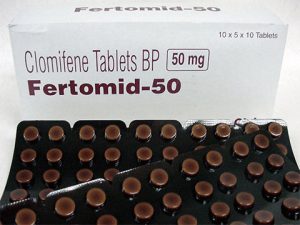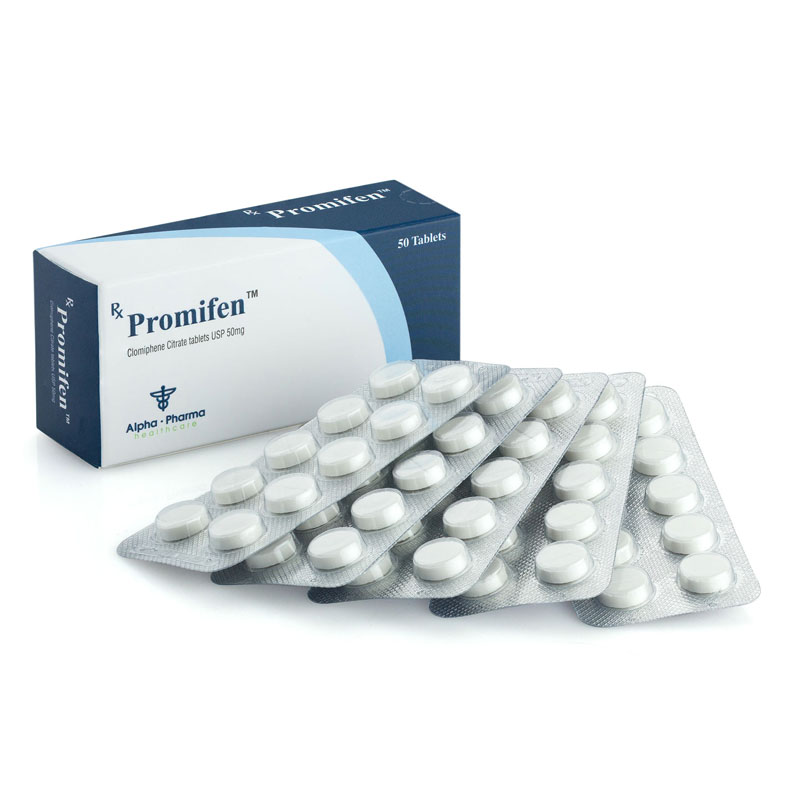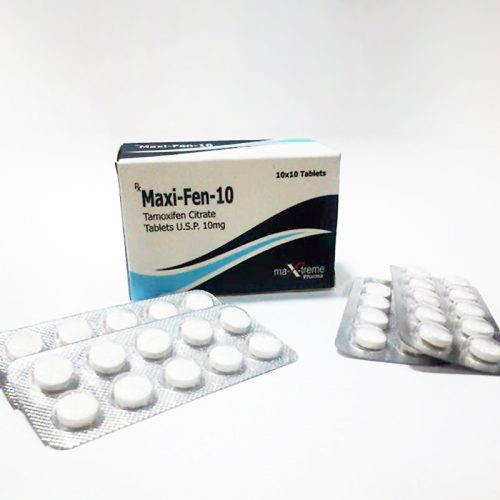Description
Clomiphene
Clomiphene, also known as Clomifene, is a medication used to treat infertility in women who do not ovulate. This includes those who have polycystic ovary syndrome. The use of Clomiphene results in a greater chance of twins. It is taken orally (by mouth) once a day. Its introduction began the era of assisted reproductive technology.

Common side effects include pelvic pain and hot flushes. Other side effects can include; changes in vision, vomiting, trouble sleeping, ovarian cancer, and seizures. It is not recommended for people with liver disease or who are pregnant. Clomifene is in the selective Oestrogen receptor modulator (SERM) family of medications. It works by causing the release of gonadotrophin by the hypothalamus.
Clomifene was approved for medical use in the United States in 1967. It is on the World Health Organization’s list of essential medicines, the most effective and safe medicines used within the health system. It is available as a generic medication.
Clomiphene usage

Clomifene is useful in those who are infertile due to an ovulation or oligoovulation issue. Evidence is lacking for the use of Clomifene in those who are infertile without a known reason. In such cases, studies have observed a clinical pregnancy rate of 5.6% per cycle with Clomifene treatment vs. 1.3%–4.2% per cycle without treatment.
Clomifene has also been used with other assisted reproductive technology to increase success rates of these other modalities.
Proper timing of consumption while using this drug is very important; it should be taken starting around the fifth day of the user’s cycle, and there should be frequent intercourse taking place during this time.
The following procedures may be used to monitor induced cycles:
- Follicular monitoring with vaginal ultrasound, starting 4–6 days after the user’s last pill. Serial transvaginal ultrasound can reveal the size and number of developing follicles. It can also provide presumptive evidence of ovulation such as a sudden collapse of the preovulatory follicle, and an increase in fluid volume in the rectouterine pouch. After ovulation, it may reveal signs of luteinisation such as; the loss of clearly defined follicular margins and the appearance of internal echoes.
- Serum Estradiol levels, starting 4–6 days after the user’s last pill
- Post-coital test 1–3 days before the user’s ovulation cycle begins, to check whether there are at least 5 progressive sperm per HPF
- Adequacy of LH surge by urine LH surge tests 3 to 4 days after the last Clomifene pill is taken
- Mid-luteal progesterone, with at least 10 ng/ml 7–9 days after the ovulation process has been regarded as adequate.
Repeat dosing: This 5-day treatment course can be repeated every 30 days. The dosage may be increased by 50-mg increments in subsequent cycles until ovulation is achieved. It is not recommended by the manufacturer to use Clomifene for more than 6 cycles. Please be advised, that if you experience any side effects or are feeling unwell from increasing your dosage, please contact your physician for more advice before consuming any more Clomiphene.
It is no longer recommended to perform an ultrasound examination to exclude any significant residual ovarian enlargement before each new treatment cycle.
Clomifene is sometimes used in the treatment of male hypogonadism as an alternative to Testosterone Replacement Therapy (TRT). It has been found to increase Testosterone levels by 2-2.5 times in hypogonadal men.
Clomifene side effects
The most common adverse drug reaction associated with the use of Clomifene (>10% of people) is reversible ovarian enlargement.
Less common effects (1-10% of people) include visual symptoms (blurred vision, double vision, floaters, eye sensitivity to light, scotomata), headaches, vasomotor flushes (or hot flashes), light sensitivity and pupil constriction, abnormal uterine bleeding and/or abdominal discomfort.
Rare adverse events (<1% of people) include: high blood level of triglycerides, liver inflammation, reversible baldness and/or ovarian hyperstimulation syndrome.
Clomifene can lead to multiple ovulation, hence increasing the chance of twins (10% of births instead of ~1% in the general population) and triplets.
Some studies have suggested that Clomifene Citrate, if used for more than a year, may increase the risk of ovarian cancer. This may only be the case in those who have never been and do not become pregnant. Subsequent studies have failed to corroborate those findings. This however is disputed and some feel there is no significant increase in risk.
The incidence of fetal and neonatal abnormalities for patients on Clomifene for fertility, is similar to that seen in the general population. There is no data to suggest a higher rate of congenital anomalies or spontaneous abortions after using this drug.



